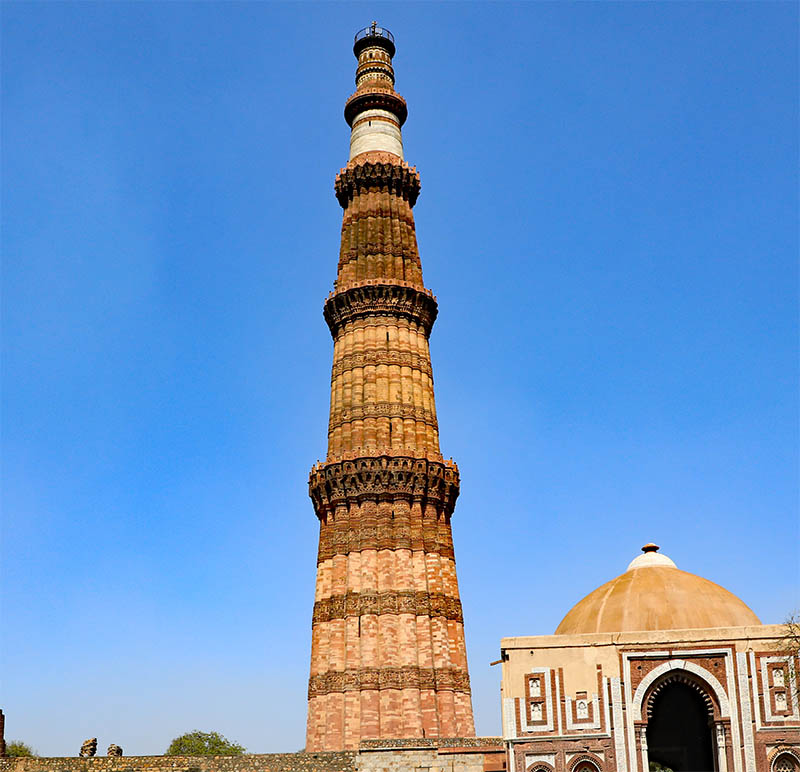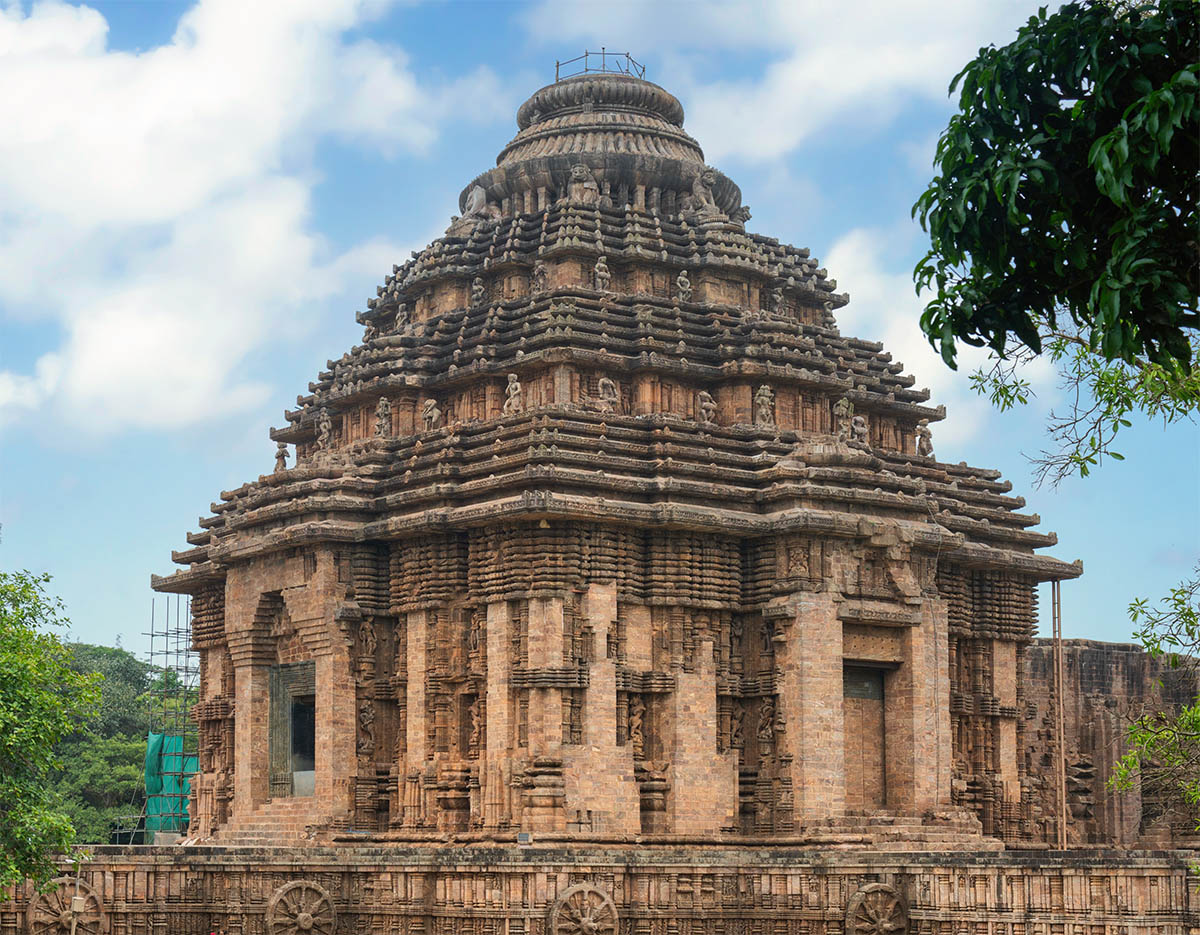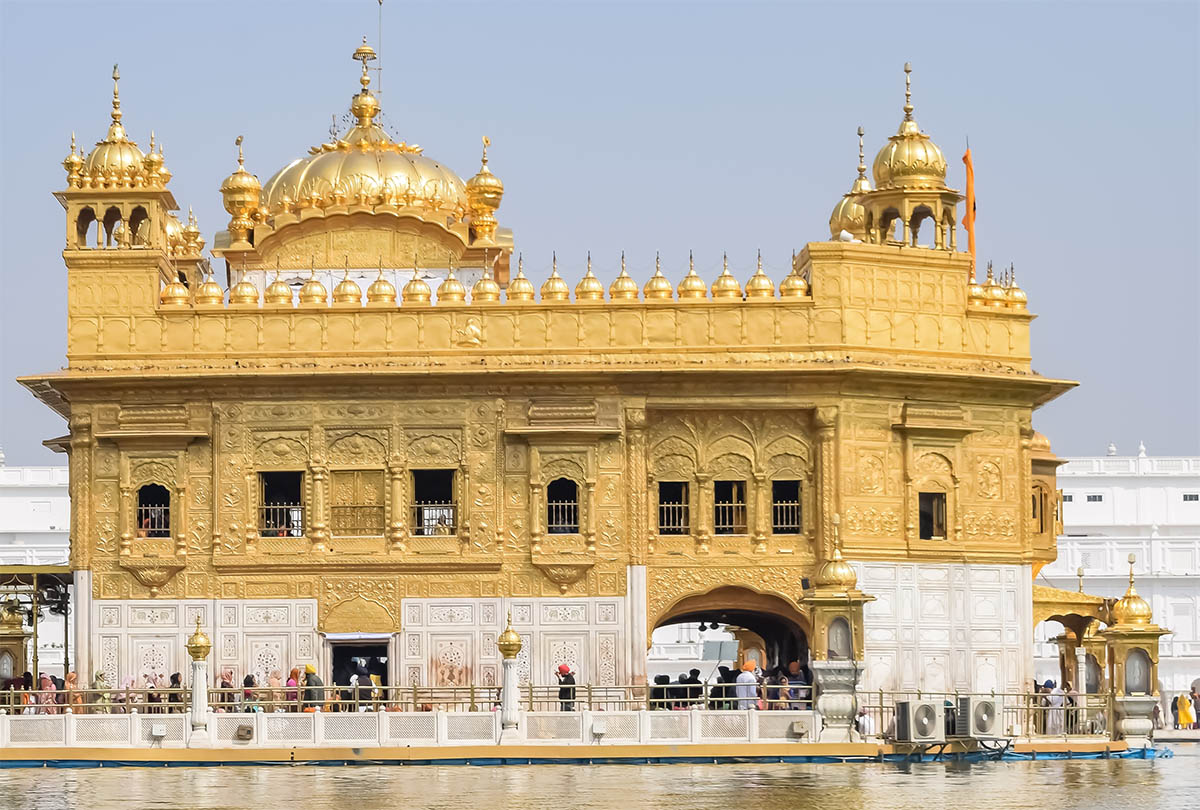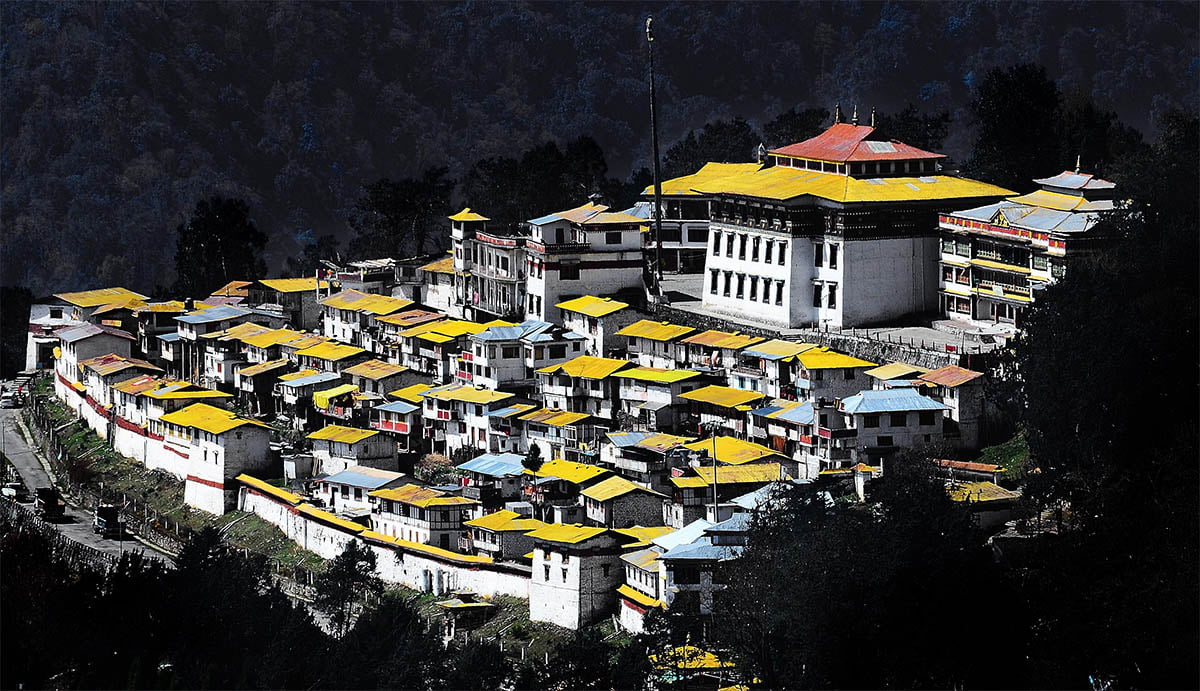Ancient India has contributed a great deal in terms of architecture, and many of its amazing buildings are still standing, attracting visitors from across the world. Let’s take a look at these historically significant monuments in chronological order:

1. Indus Valley Architecture (3300 BC–1300 BC)
Two famous civilizations, namely the Mohenjo-Daro and Harappan cultures, grew up in the Indus Valley. Harappan architecture is the most famous from this era as the Harappans were a highly organized people who saw rapid development in areas such as construction and education.
Their cities were well planned and made mostly from mud bricks. Each brick was of the width/height/length ratio 1:2:4 which is a standard shape used even today. Houses were mostly two-storied and had amazing entrances featuring geometric patterns.
Each house comprised of a big courtyard with rooms off it as required, and strong walls were built around cities to ensure protection against floods. Based on its economic status and power, a city was classified as either an acropolis or a town, with an acropolis situated centrally on higher ground to show off its dominance over the surrounding area.
The only contemporary monument which remains in a good condition today is at the Mohenjo-Daro Museum.
2. Nalanda (700 BC–1200 BC)
Nalanda has been classified as a district in Bihar since 1972, but prior to that, it was part of Patna, the capital of Bihar. Nalanda was a great temple of learning spread across 700 acres and was founded during the Gupta period in the reign of Kumaragupta.
Scholars from all over Asia used to travel there in search of education. It was supported by Buddhist emperors such as Harsha, but later when Muslims invaded India under the leadership of Bakhtiyar Khalji, the university was ransacked, marking the beginning of the decline of Buddhism in India. The Chinese scholar Xuanzang describes Nalanda as having thousands of teachers and scholars, and you can see from its ruins that it had a huge library divided into three main buildings, Ratnasagar, Ratnaranjaka and Ratnadadhi.
Its curriculum included subjects like metaphysics, astrology, the Vedas, Buddhism, and yoga. Its campus is still a major attraction for Buddhist pilgrims and is well maintained by UNESCO.
3. Ajanta Caves (2nd Century)

In the Aurangabad district of Maharashtra, 30 Buddhist caves have been carved from the rock. Paintings on the walls depict Buddhist stories and the life of Buddha. Once covered by jungle, these wonders were discovered by British officer Captain John Smith in 1819. They are situated close to the River Waghur and are surrounded by waterfalls, the acoustics of which can be heard from within the caves.
The caves are believed to have been built in two halves during the Satavahana and Vakataka periods. They consist of monasteries and worship halls constructed by Hindus and Buddhists, with each cave having its own importance. Some caves depict the early lives of Buddha while the others have Sanskrit inscriptions on their walls.
Sculptures from the Ajanta caves tell us much about contemporary culture and society, and the presence of foreigners in the images gives us an idea about international trading during the Buddhist period. The dress and jewelry seen in the images also clearly show the wealth of parts of society during that era.
Because of its immense historical significance, UNESCO has chosen to preserve Ajanta’s paintings and protect the site from further damage by erosion. Along with the Ellora caves, this site attracts many tourists to Maharashtra.
4. Qutub Minar (13th Century)

The founder of the Delhi Sultanate, Qutb-al-Din-Aibak, laid the foundation stone for this historic minaret which is based on contemporary patterns from Afghanistan. Later, the sultan Firuz Shah Tughlaq restored the damaged tower, and Sher Shah Suri built the entrance to the monument.
The 239.5-foot tower tilts 25.5 inches at the top. Its narrow passages can be problematic for tourists, and in 1981, owing to a fault with the lights, hundreds of visitors were injured in a stampede. A replica of the tower has been built for filming purposes since its narrow space cannot accommodate large cameras. Recently, one website did a full circle walk-through of the tower.
5. Konark Sun Temple (13th Century)

This temple was built under the initiative of King Narasingha Deva of the Ganga dynasty. It is a beautiful example of Kalinga architecture and is dedicated to the god of the sun. Once, it stood even higher than the main temple of Puri located 40 kilometers away, and sailors from the Bay of Bengal used its tip for navigation purposes.
Its historical damage is believed to have been caused by constant attacks from Muslim leaders. UNESCO has now taken responsibility for the site, which is an important pilgrimage destination throughout the year especially during the Chandrabhaga Mela fair held annually in the month of February.
6. Hampi (14th Century)
Currently, a district in Karnataka, Hampi used to be the center of the Vijayanagara Empire. Spread over 4,000 hectares, it was the richest city after Beijing during this period. It is built from granite in the Indo-Arabic style and is located on top of a hill.
Islamic tombs and graveyards were added during the Delhi Sultanate. Evidence suggests that it was originally popular with traders from Persia and Portugal, but as the Hindu period made way for the Sultan invaders, Hampi lost its importance, gradually became deserted, and later fell into ruin. However, you can still see evidence of a monastery, a palace, temples, and pillared halls. It has now become a UNESCO heritage site due to its historical significance.
7. Golden Temple (15th Century)

Also known as Sri Harmandir Sahib (Abode of God), the Golden Temple is considered to be the holiest gurdwara for the Sikh community. It was constructed around an artificial pool built by Guru Ram Das, and towards the end of the 15th century, Guru Arjan requested a Muslim peer lay its foundation stone. He placed the Adi Granth (holy book of the Sikhs) in it and Baba Buddha was its first official guru.
The temple has been attacked several times by Muslim invaders from Afghanistan, who razed it to the ground and filled the lake with garbage. The Sikh community has always strived to preserve it, and in 1830, the then King of Punjab, Maharaja Ranjit Singh, completed the renovations and covered it with gold, giving it its current name. It comprises of several large courtyards, a cluster of ber trees, and museums.
It runs a langar which is a free vegetarian kitchen run by the Sikh community for all visitors irrespective of their financial status. Important Sikh festivals are celebrated with great pomp inside the temple such as Guruk Nanak’s birthday and the Vaisakhi festival in the middle of April.
8. Tawang Monastery (17th Century)

Popularly known as Gaden Namgyal Lhatse, the Tawang Monastery is a three-storied monument housing 65 residential buildings. Its foundation stone was laid by Merak Lama Lodre Gyatso in 1680. It also houses a library containing valuable Buddhist scripture, but some of these manuscripts have been damaged by insects.
Its main temple, Dukhang, has recently been renovated and is decorated with paintings and sculptures, and important festivals such as Choksar, Losar, Ajilamu, and Torgya are celebrated there. It is located at a height of 3,000 meters and is at constant risk from landslides due to river erosion. Despite this, its elevated position lends it an air of serenity on the top of the hill with an outstanding view of the Tawang River that flows through the state of Arunachal Pradesh.
9. Makkah Masjid (17th Century)
Situated near the historic Charminar and Chowmahalla Palace, the Makkah Masjid’s central arch has been built from bricks made from soil from Mecca. Its name was suggested by the then ruler of the Qutb dynasty, Muhammad Quli Qutb Shah.
Later, the city of Hyderabad was built around the mosque, keeping it in the center. Its construction employed hundreds of laborers and took many years to complete. It was finally finished in 1692 during the reign of Aurangzeb. Many Hyderabad rulers are buried there.
This heritage building has been damaged by pollution and low maintenance, and the government has now taken steps to maintain it. Ten years ago, a bomb exploded inside the building during Friday prayers, killing more than 10 people. Since then, security has been tightened.
10. Taj Mahal (17th Century)

One of the seven new wonders of the world, the Taj Mahal is a monument to love, built by Shah Jahan in memory of his wife Mumtaz Mahal. Its construction on the bank of the River Yamuna employed 20,000 artisans under the mentorship of chief architect Ustad Ahmad Lahouri.
Built of white marble, it has minute and detailed designs from Persian culture and Mughal architecture. Calligraphy from Persian poems and Arabic verses have been inscribed on its walls. Its reflective tiles and jali latticework are prominent architectural features of the period.
This heritage building is gradually becoming damaged by chemical erosion and acid rain, and UNESCO is trying to protect it from further destruction. It attracts millions of tourists every year.
11. Hawa Mahal (18th Century)

The Hawa Mahal or Palace of Breeze in Jaipur is a vivid example of the intricate designs of the period. It is a five-storied, pink sandstone monument in the form of a pyramid and was built for the women of Jaipur to get a view of the world without having to step outside.
Built by Maharaja Sawai Pratap Singh, it is the perfect blend of the Rajput style of dome-shaped canopies and Mughal filigree work. There is a scientific explanation behind its name because it was built in such a way to ensure that air circulation provided a cooling effect within its chambers.
These chambers are further decorated with wooden jharokas and fountains. Its maintenance is currently supervised by the government of Rajasthan.
12. Shaniwar Wada (18th Century)
This historic fortification was at the center of Maratha politics till the British East India Company took control of the Peshwas during the Third Anglo-Maratha War. It was built by Peshwa Baji Rao I who served as prime minister to Chhatrapati Shahu and comprises of a palace with five doors: Dilli Darwaza, Mastani Darwaza, Khidki Darwaza, Ganesh Darwaza, and Jambhul Darwaza, each of the names having its own significance.
It has featured in several movies, most recently in Bajirao Mastani (2015). The complex is situated on the banks of the Mula-Mutha River and consists of gardens, fountains, a palace, nine bastion towers, and five doors.
Conclusion
The architecture of ancient India has evolved over the centuries from Vedic, Mughal, and Rajput designs. Inscriptions on the walls and the accuracy of their measurements tell us how carefully these structures were designed.
The symmetry of the buildings emphasizes the strength of civil engineering in ancient India, enabling these monuments to survive many wars and natural disasters. They bring much revenue to the country through tourism, and their conservation is of the utmost importance.